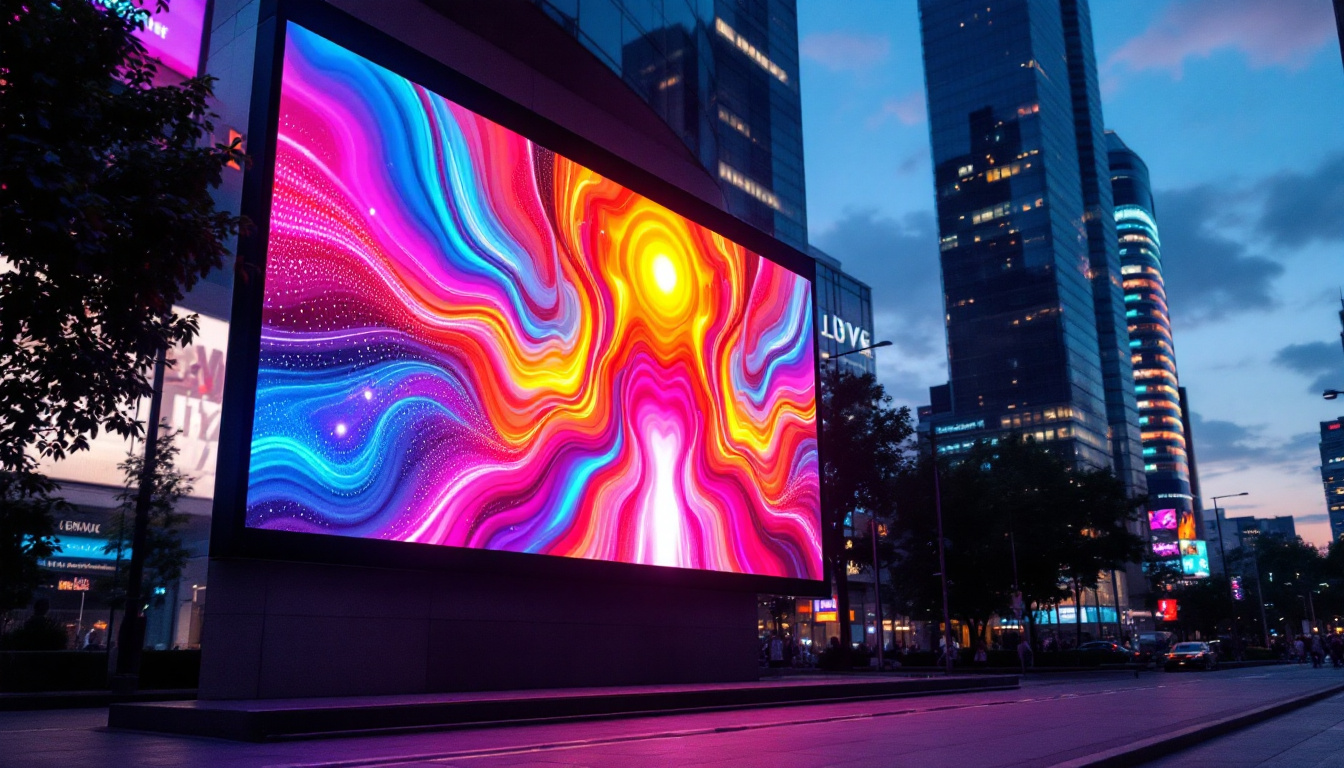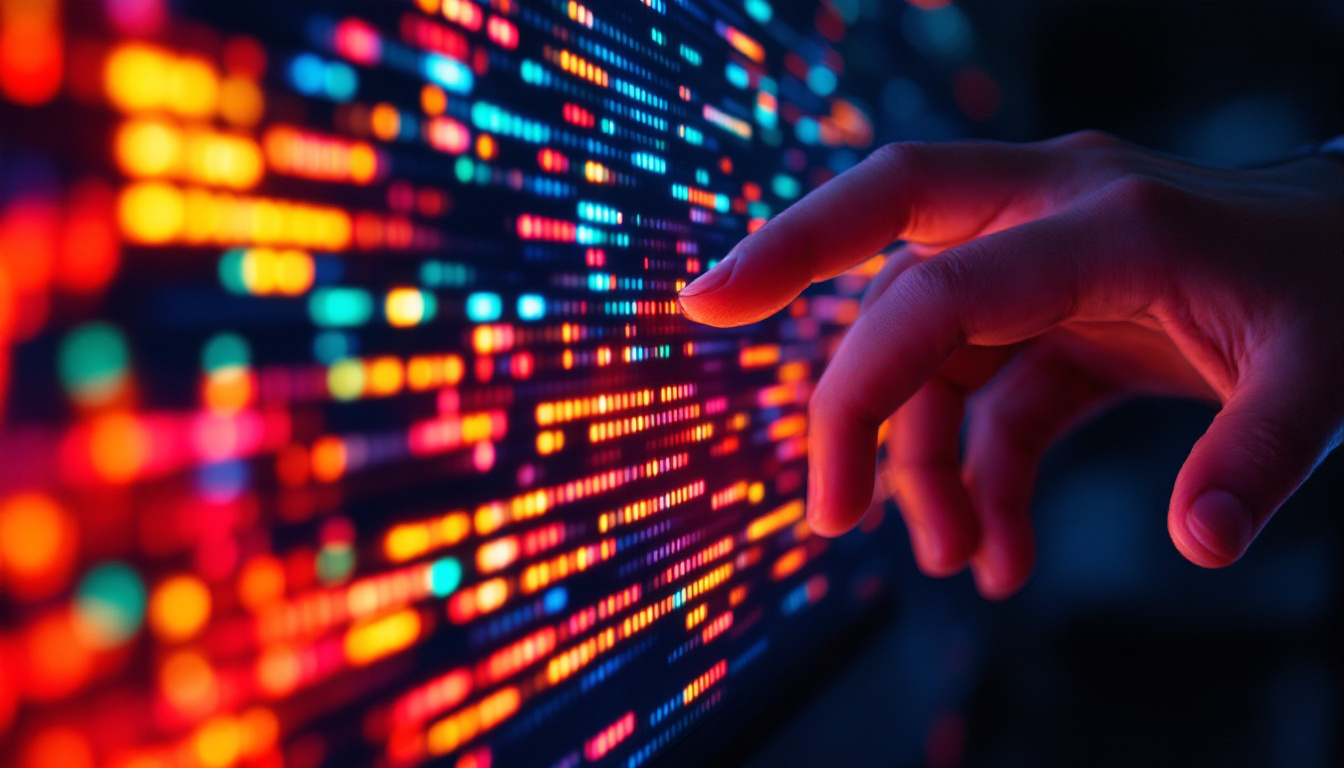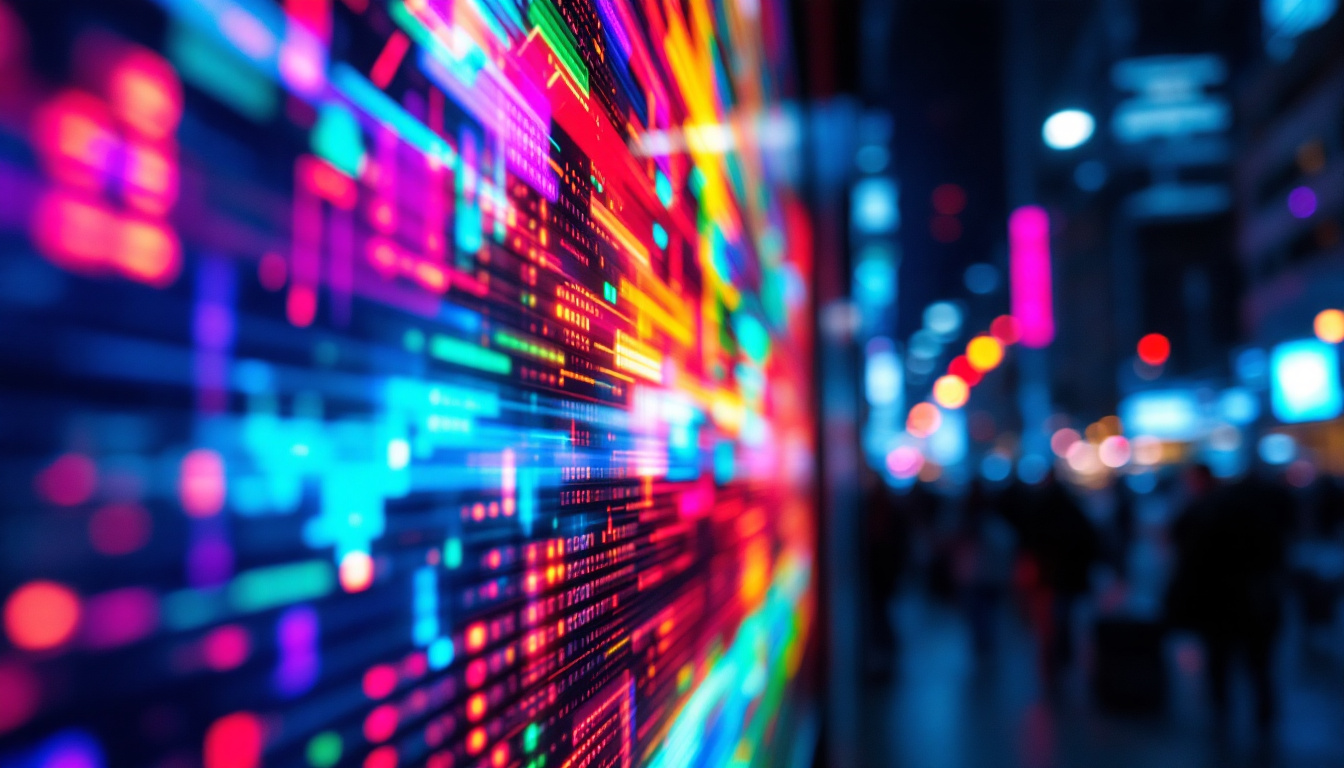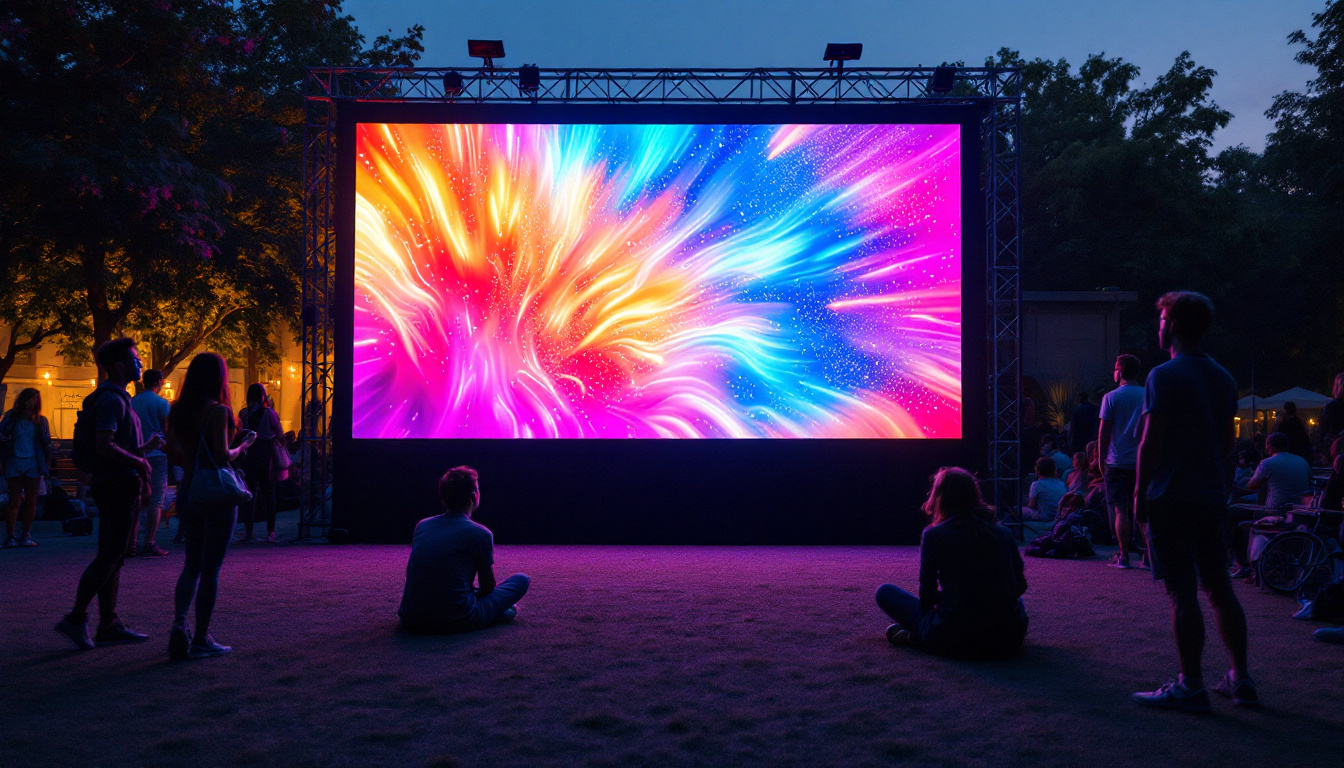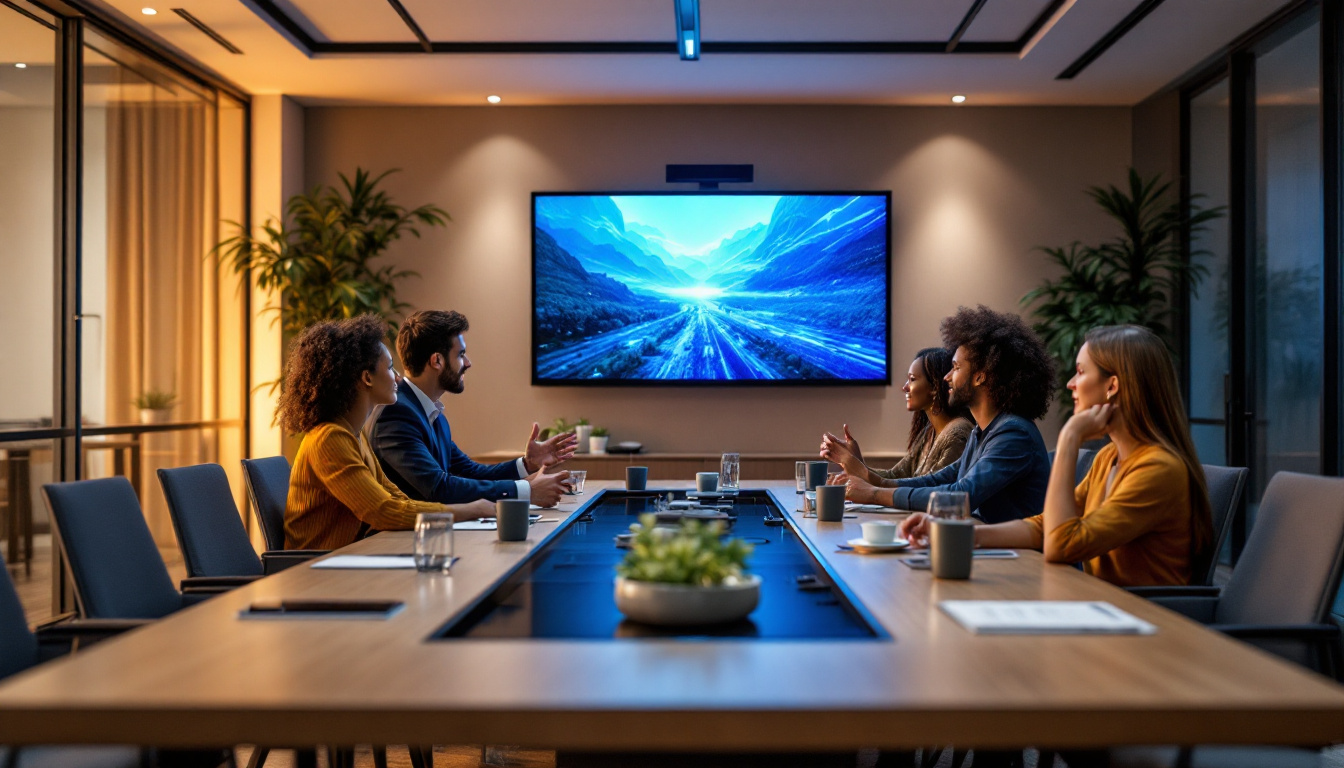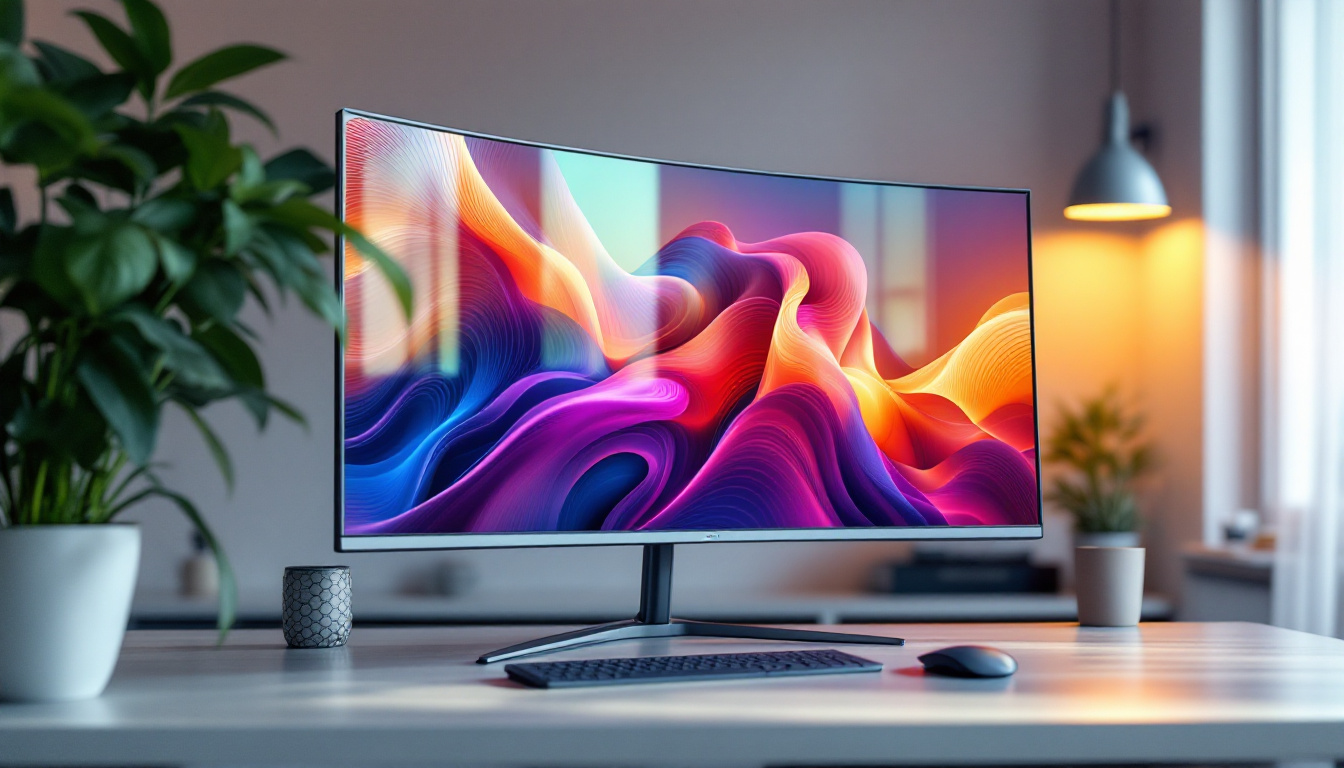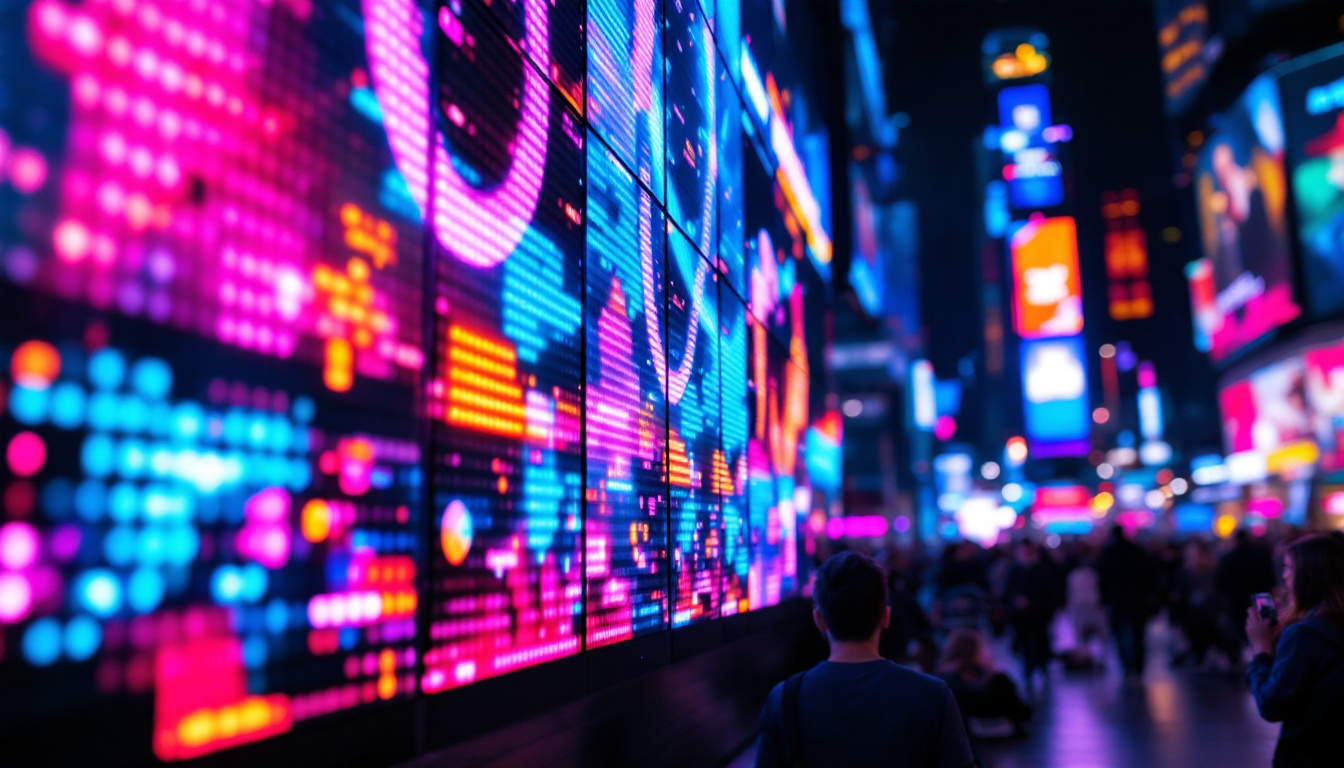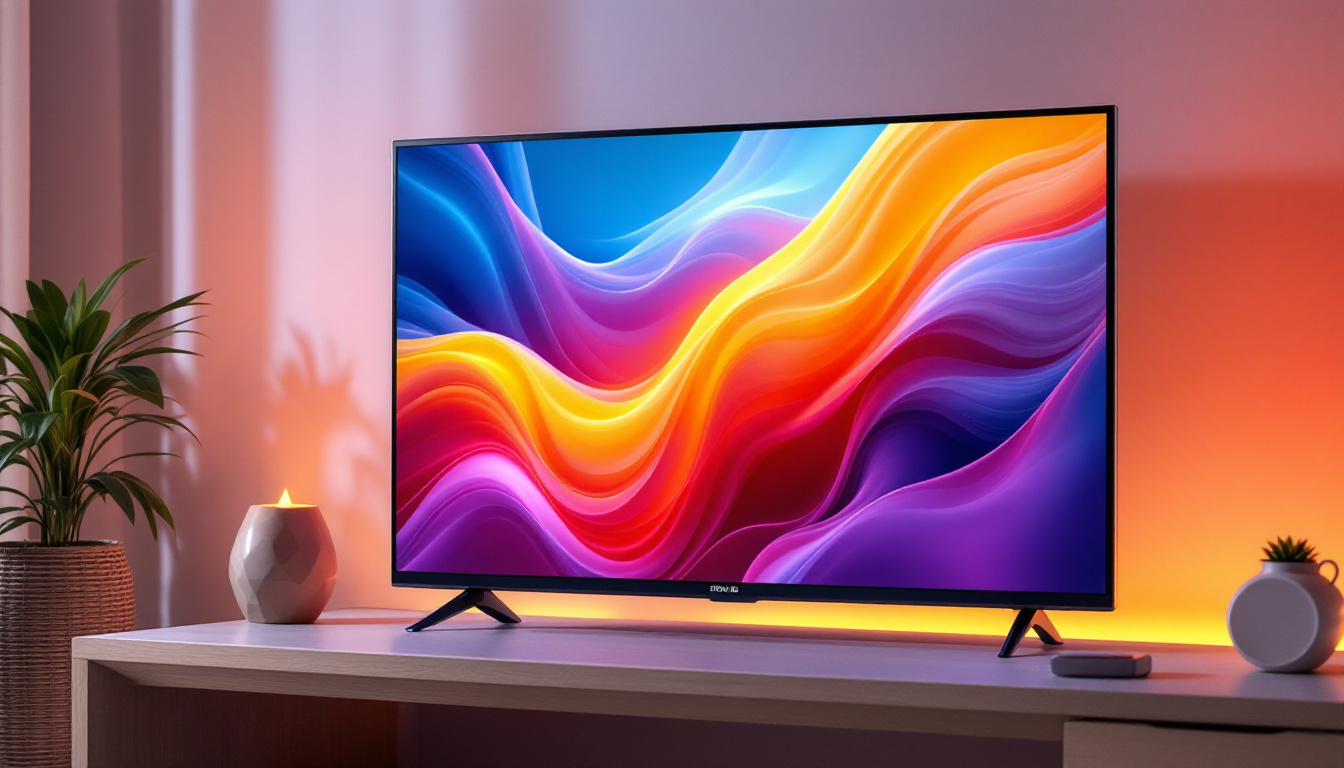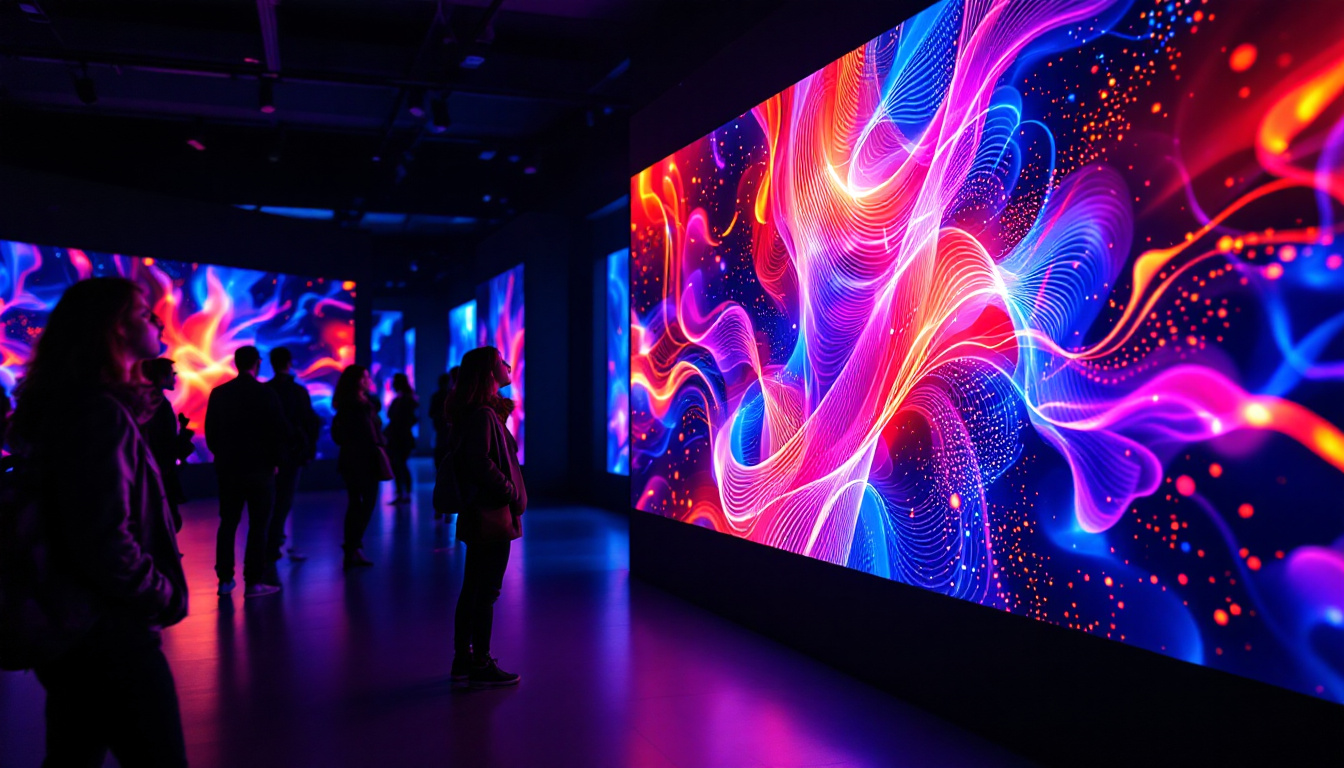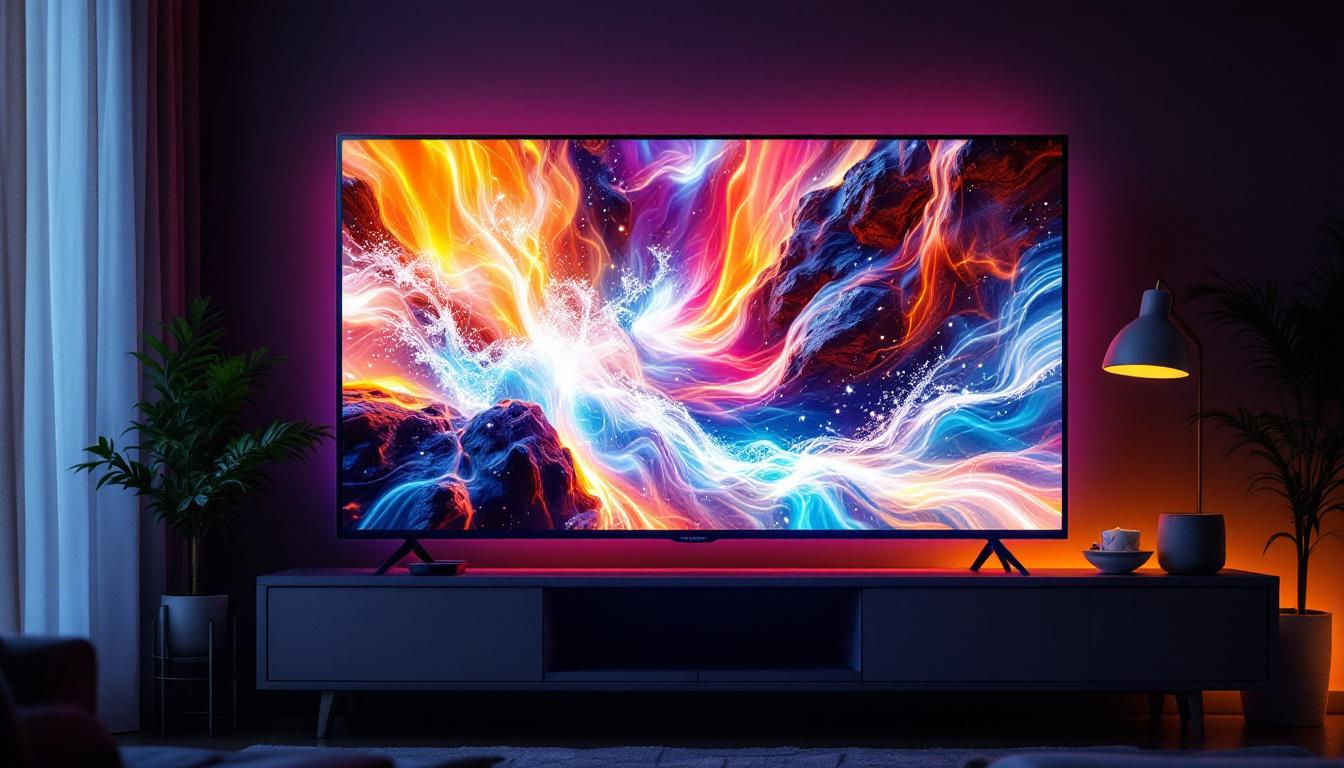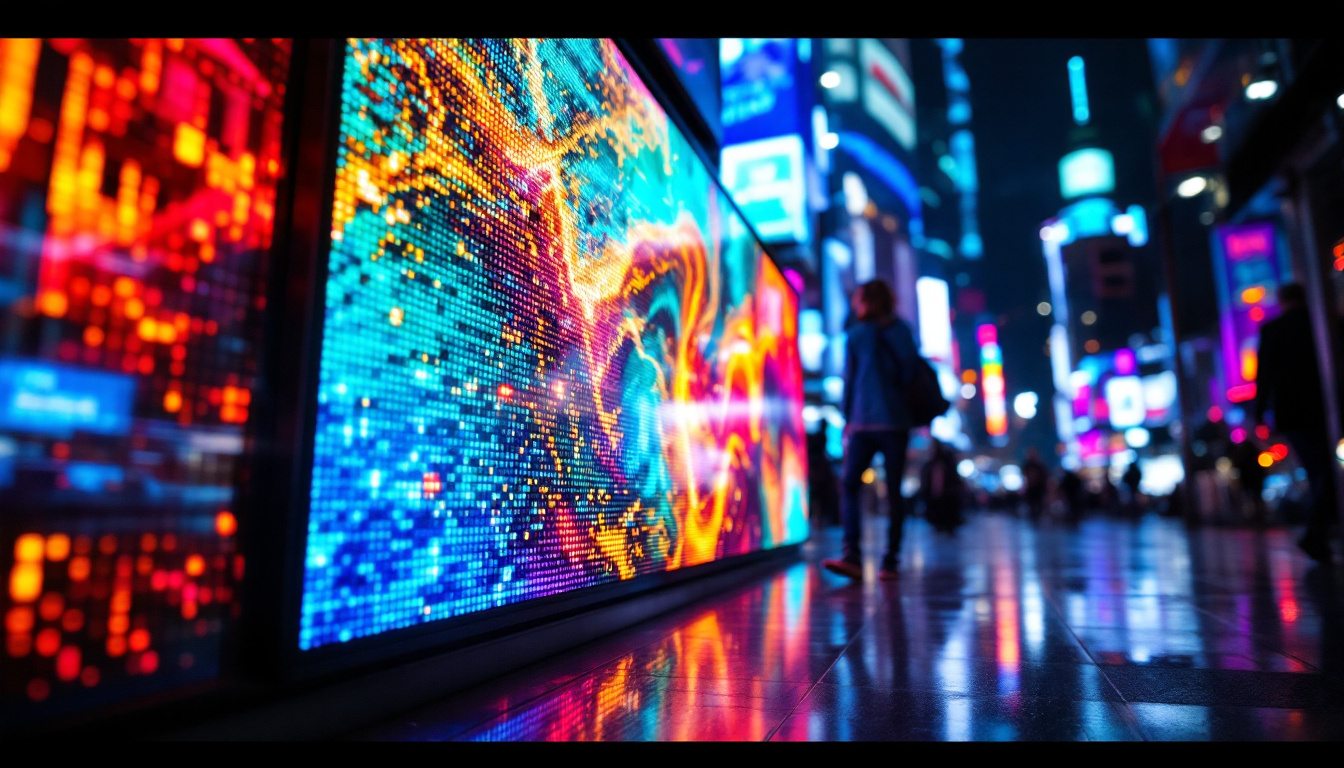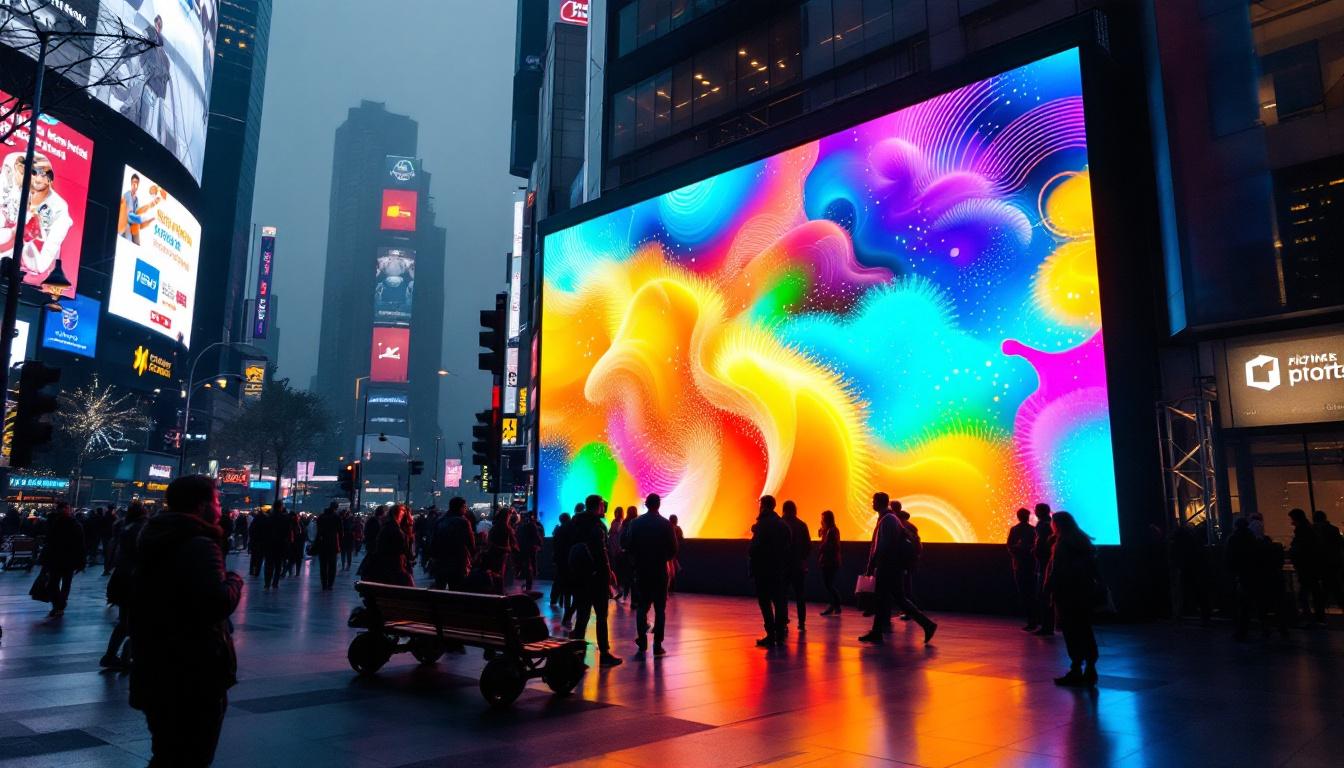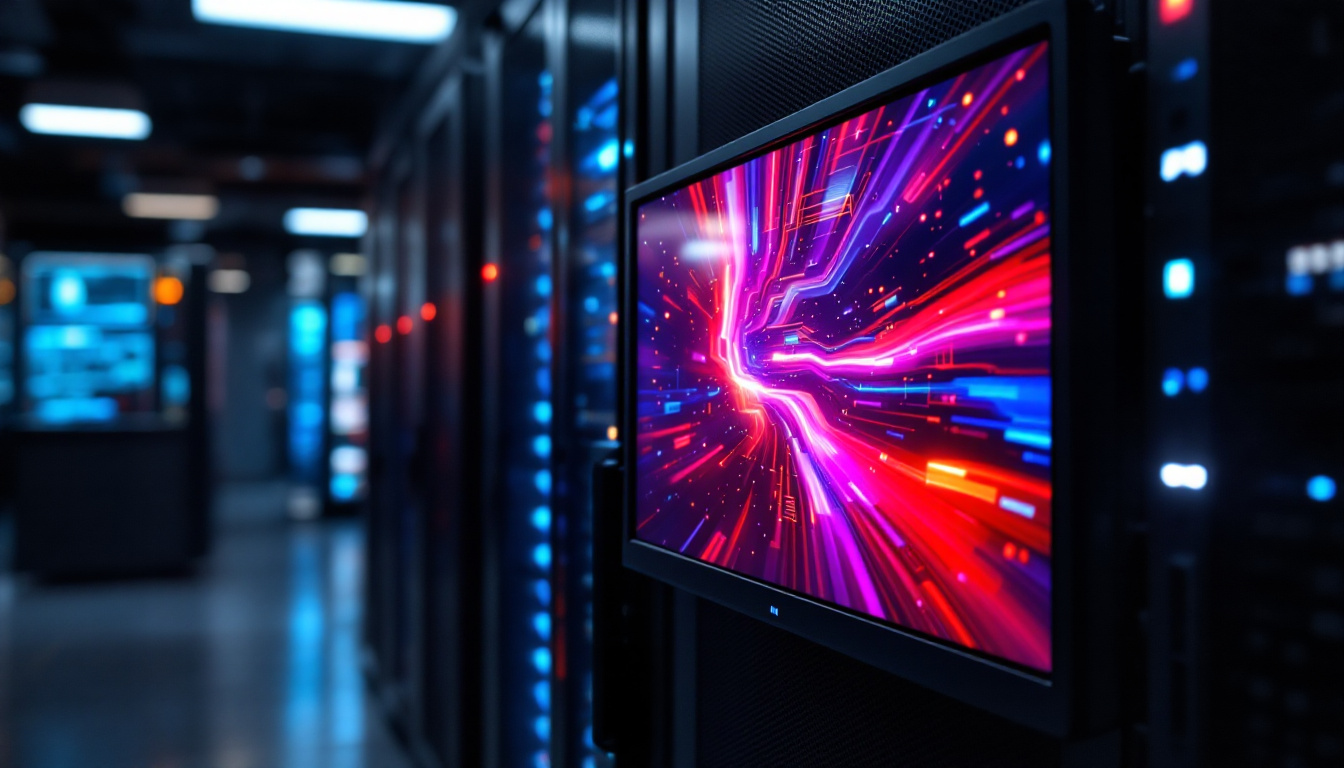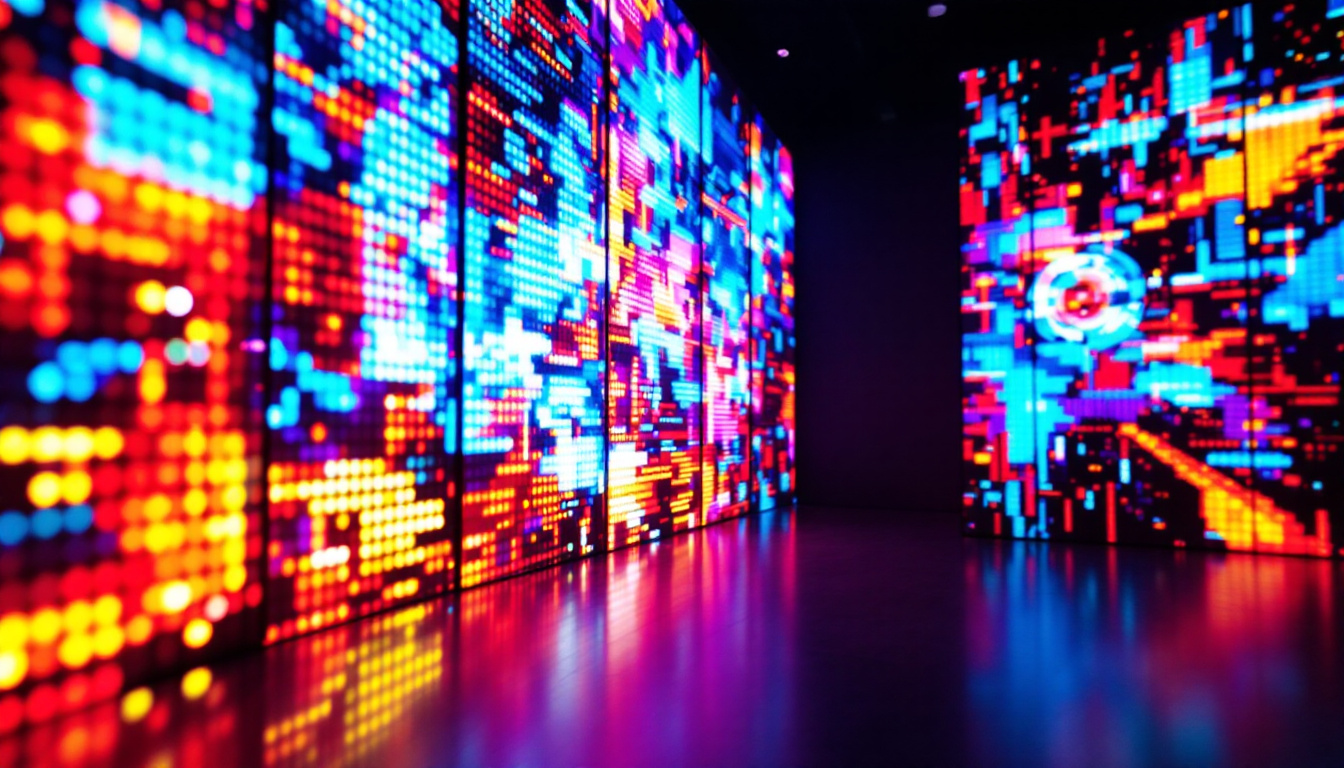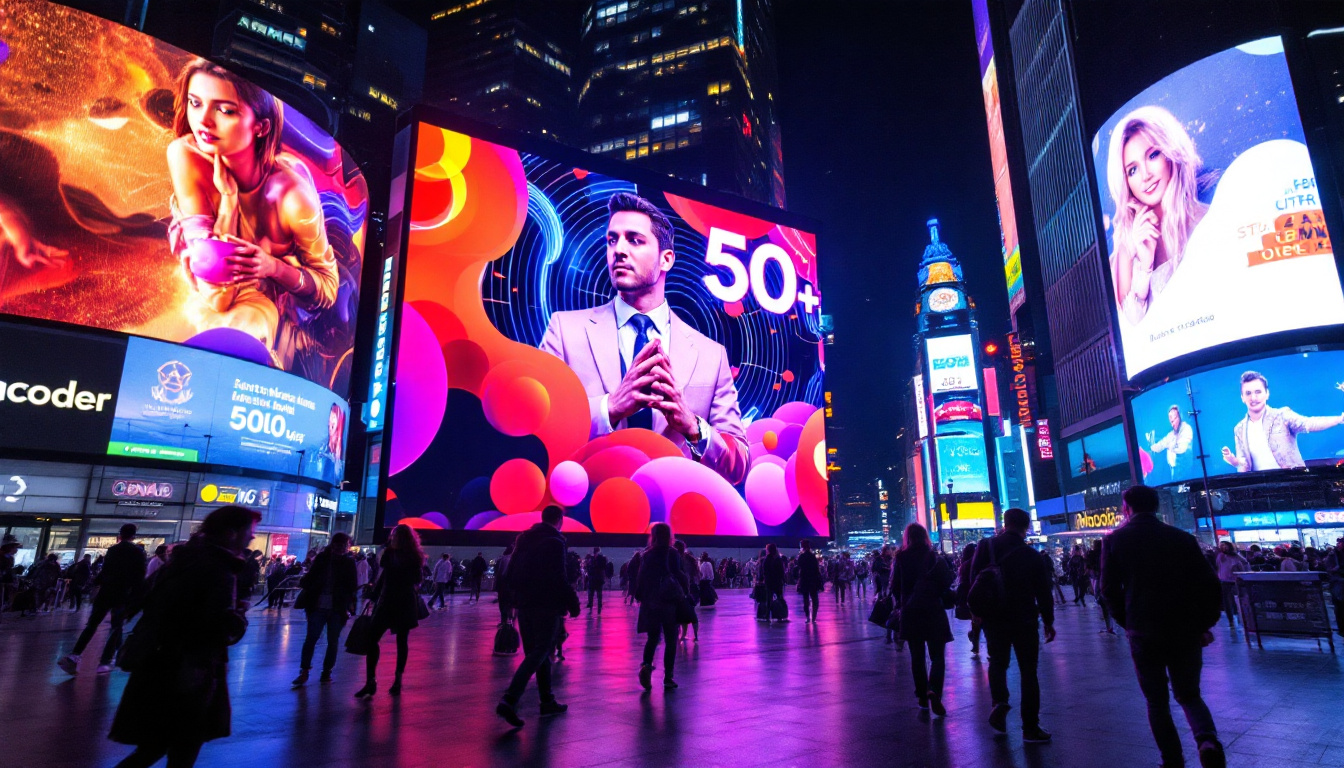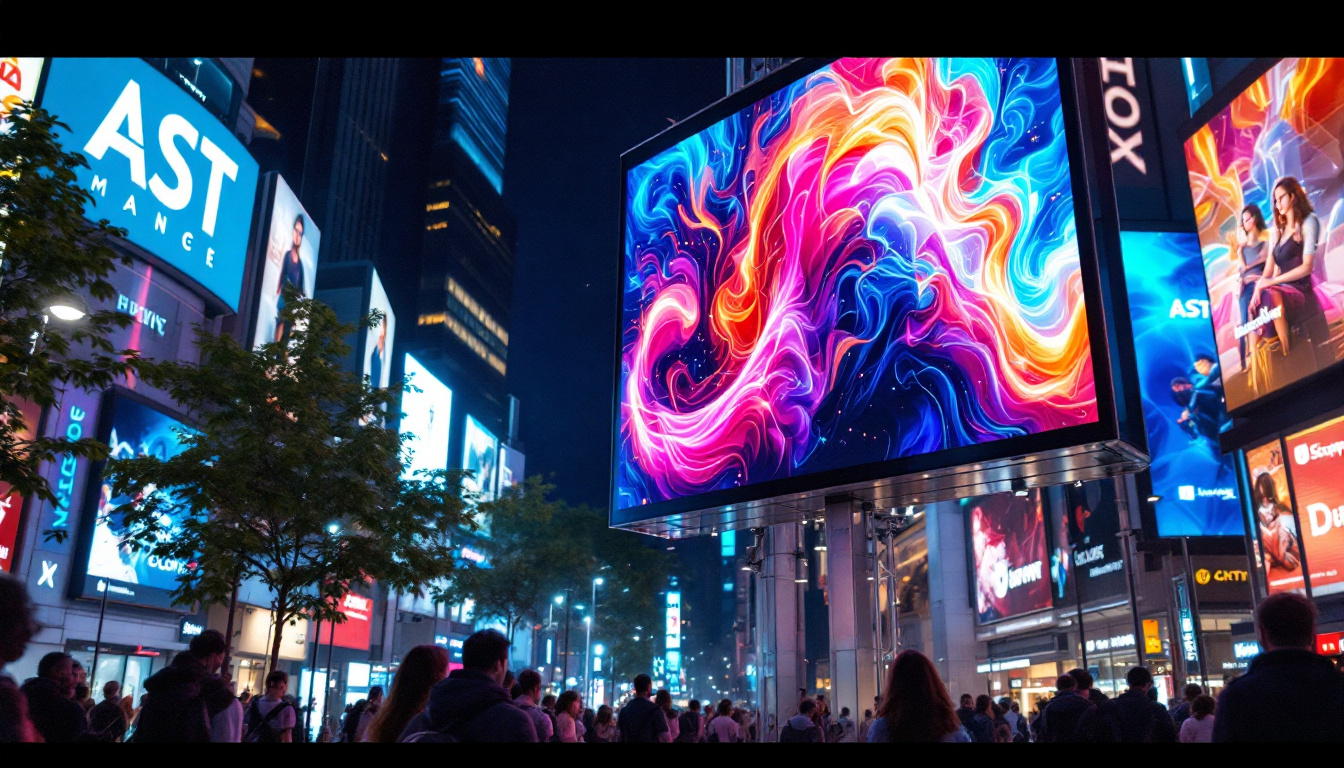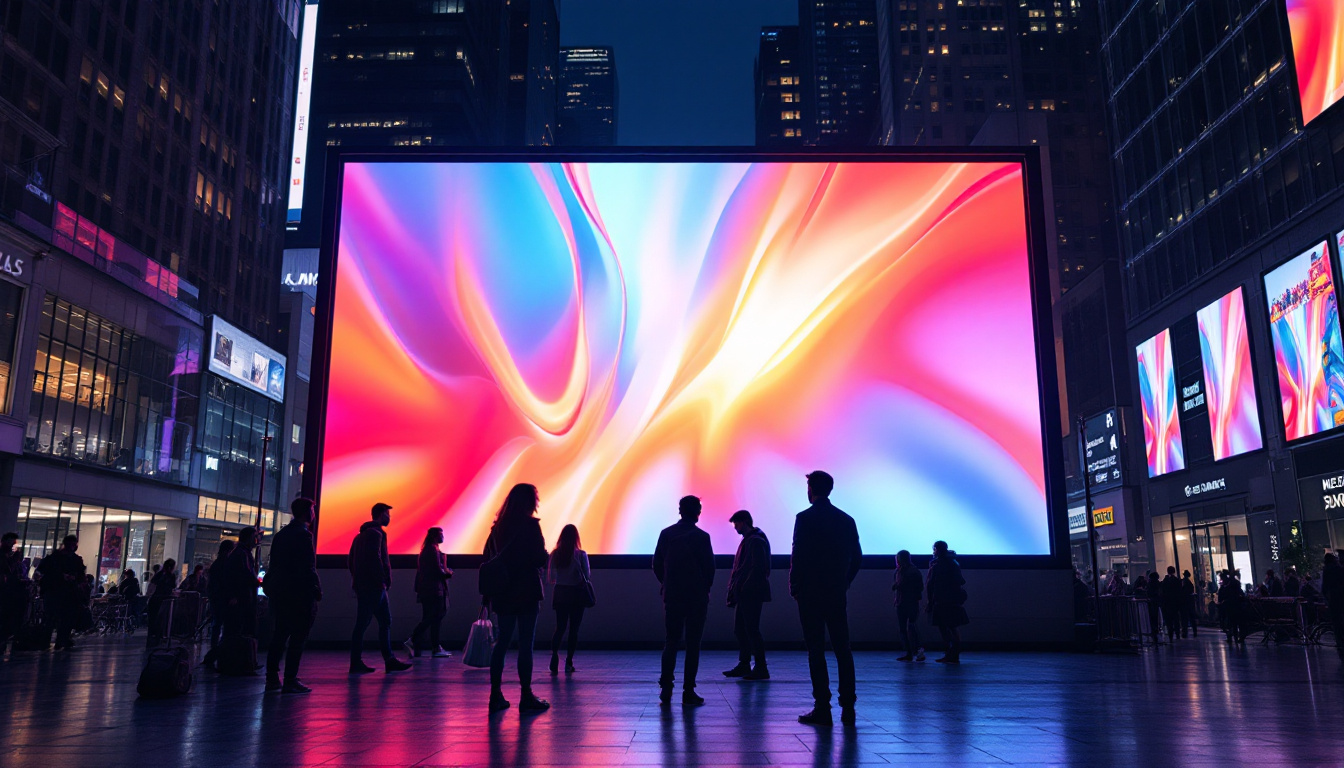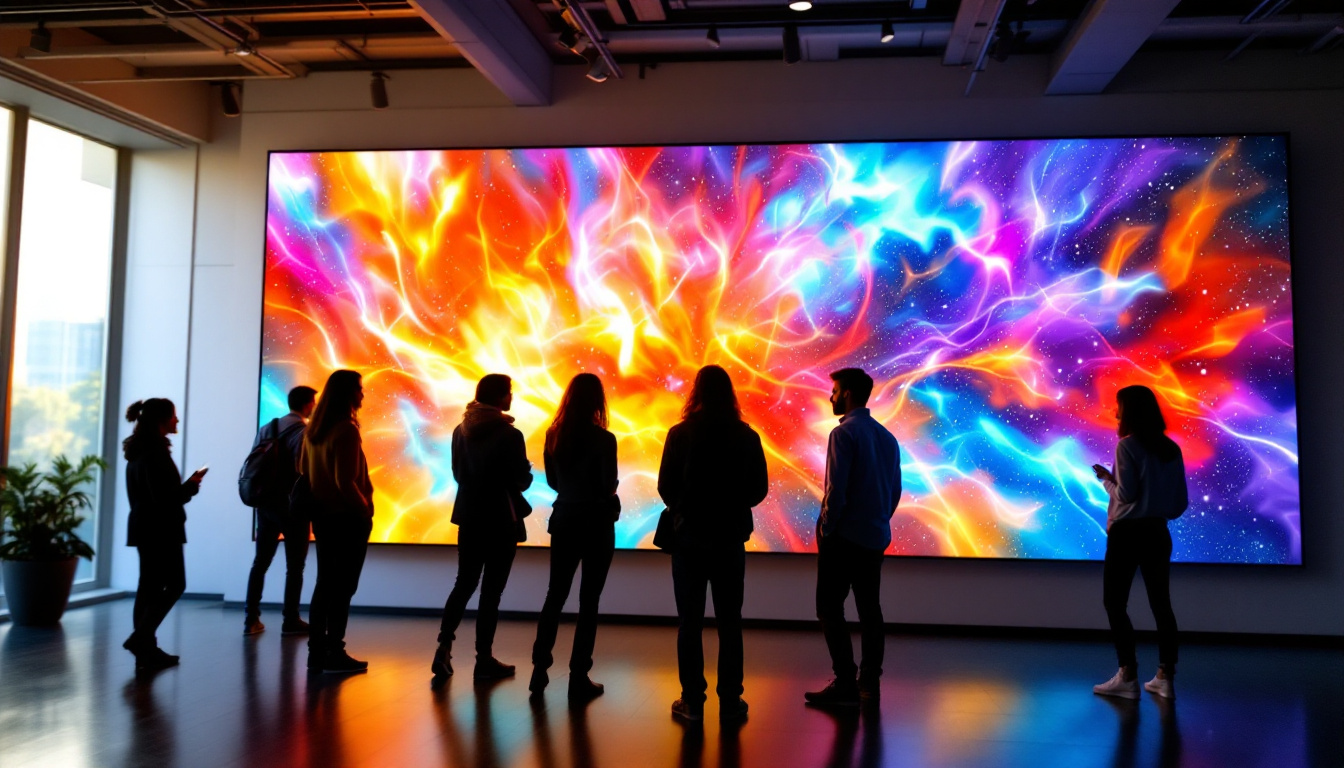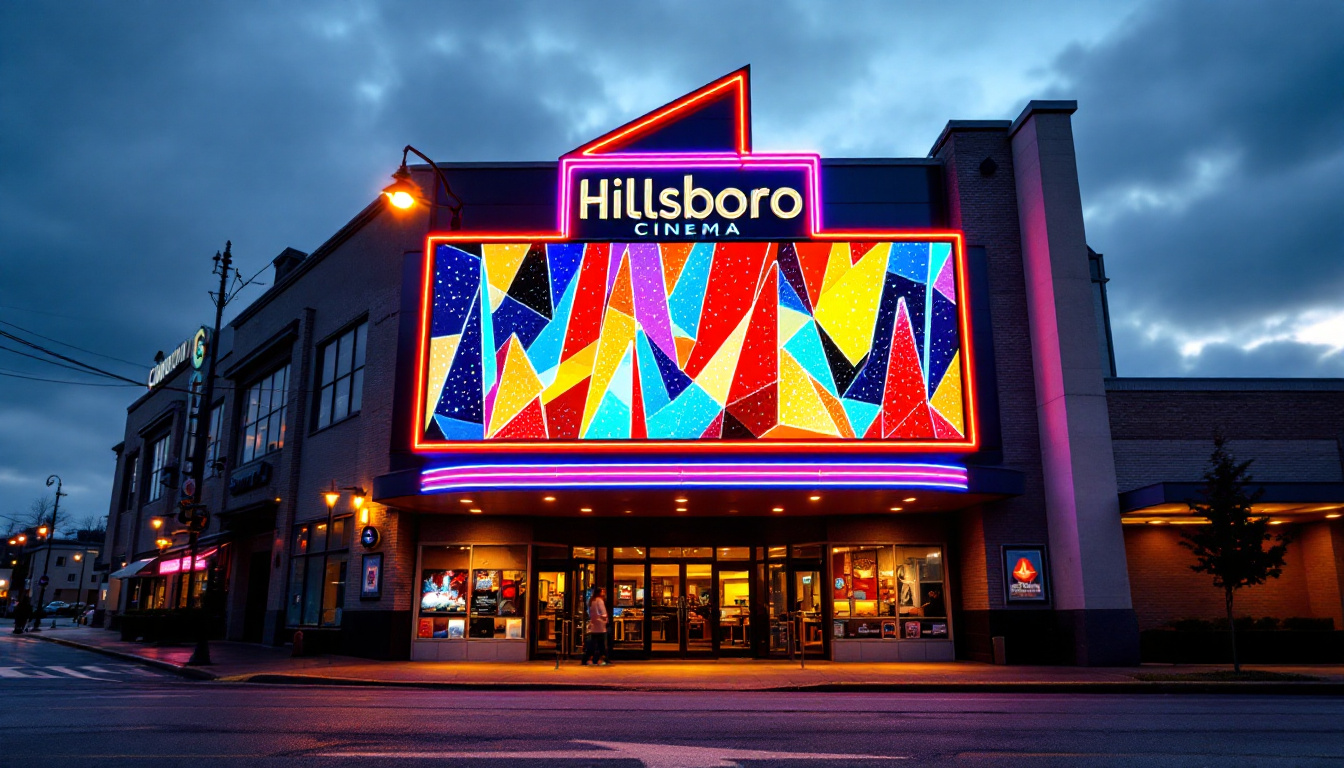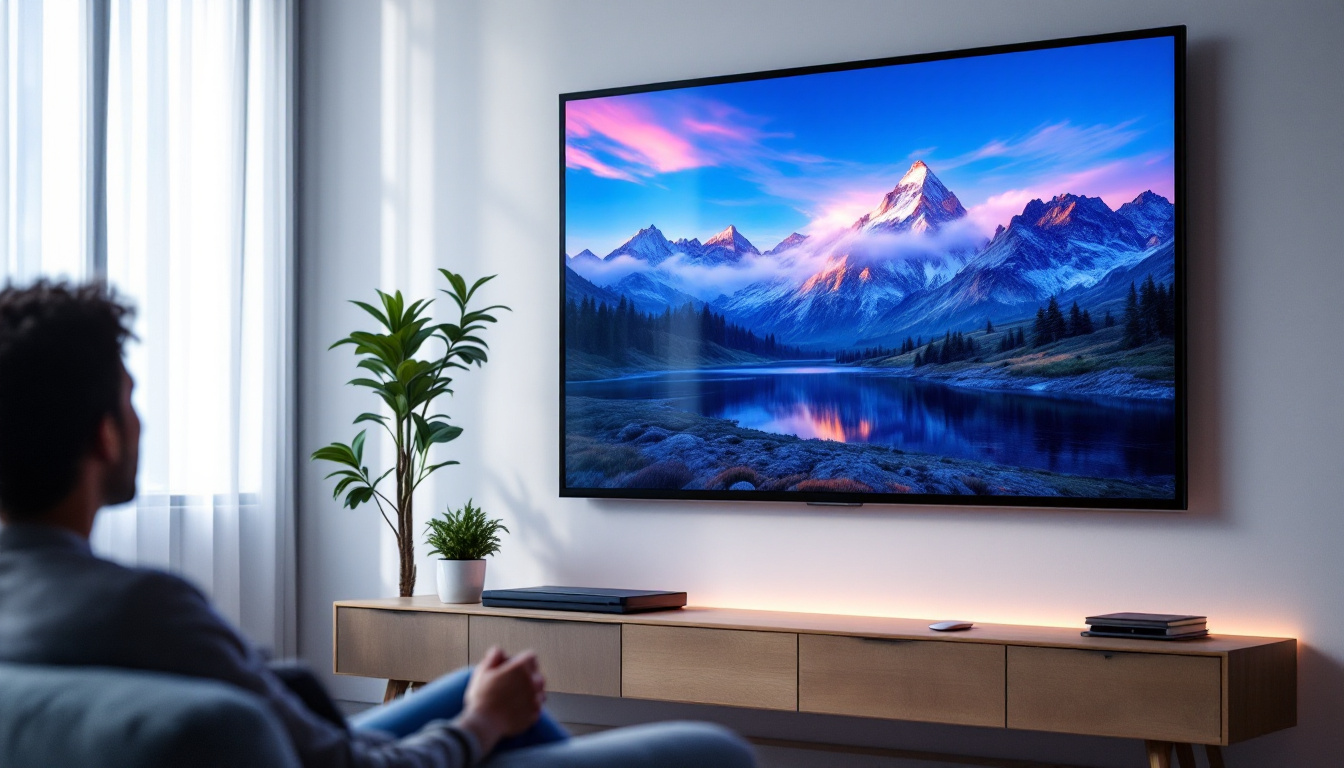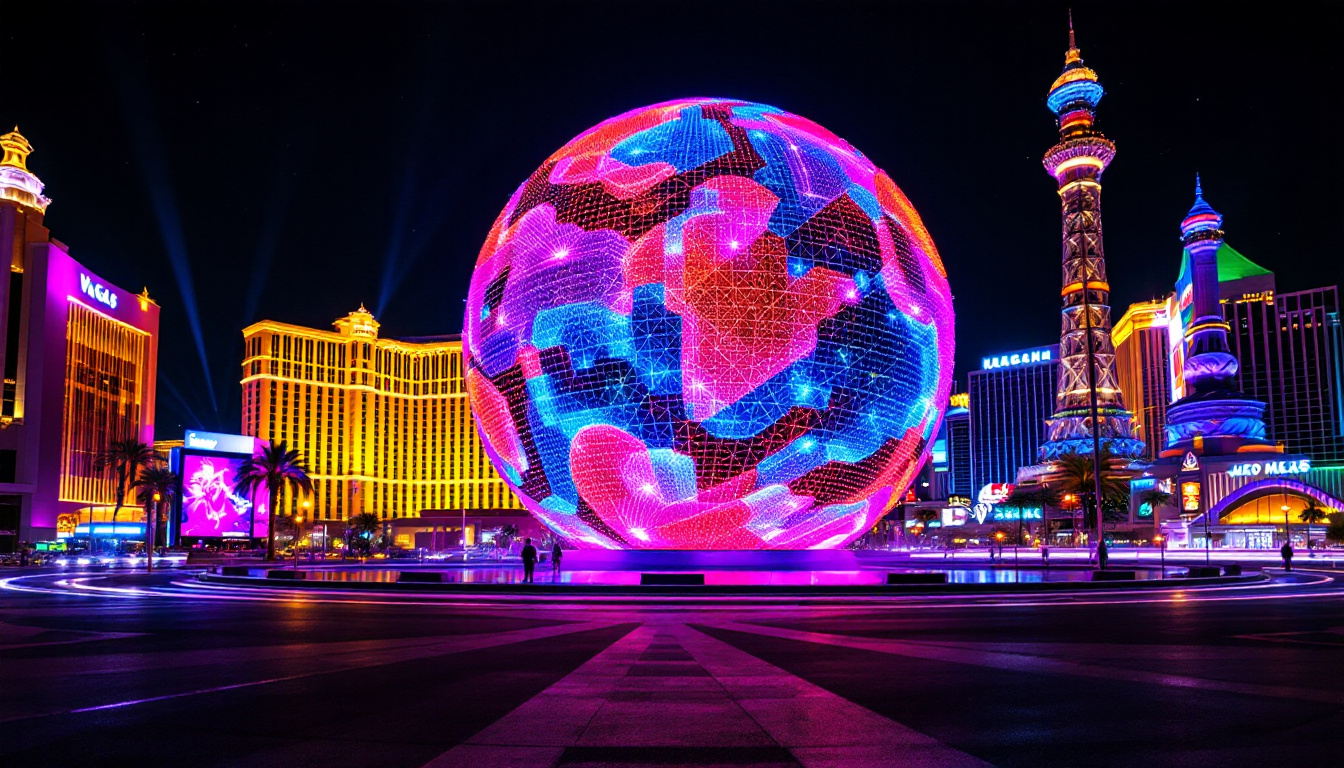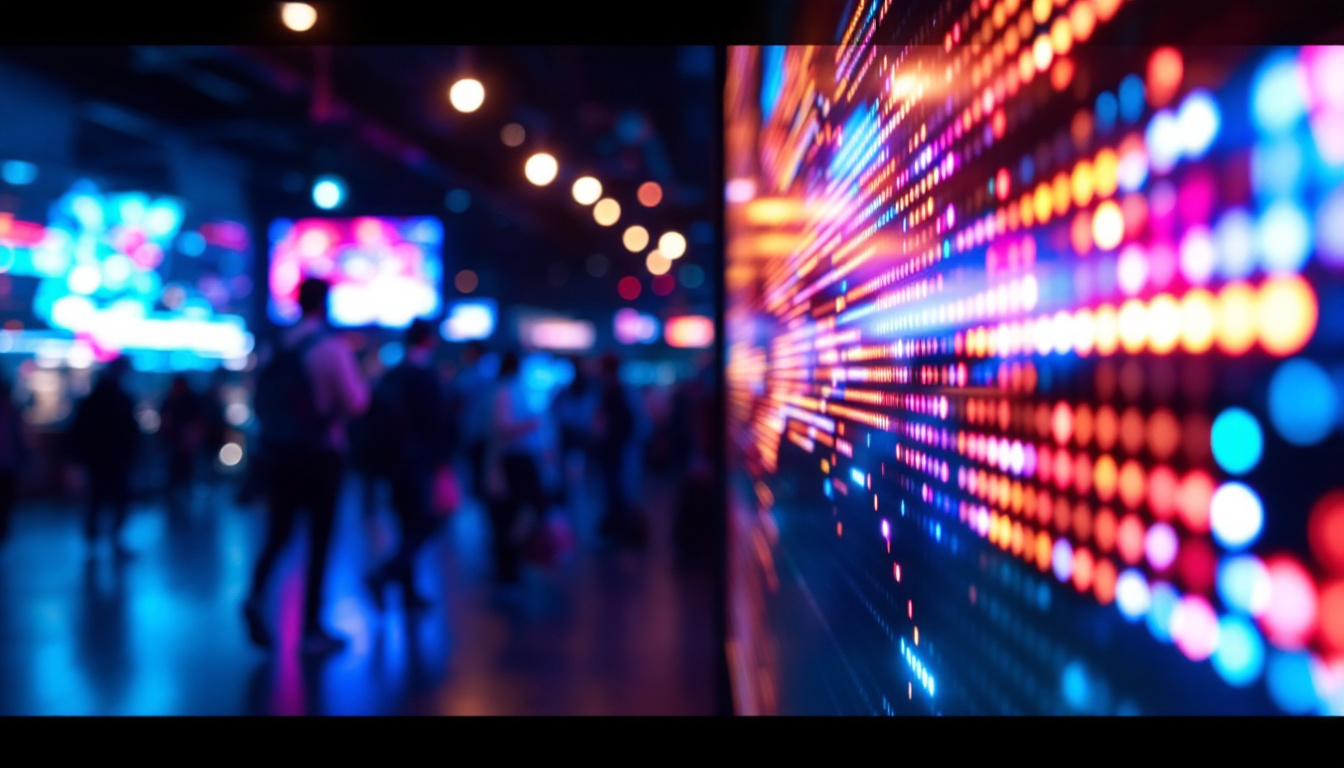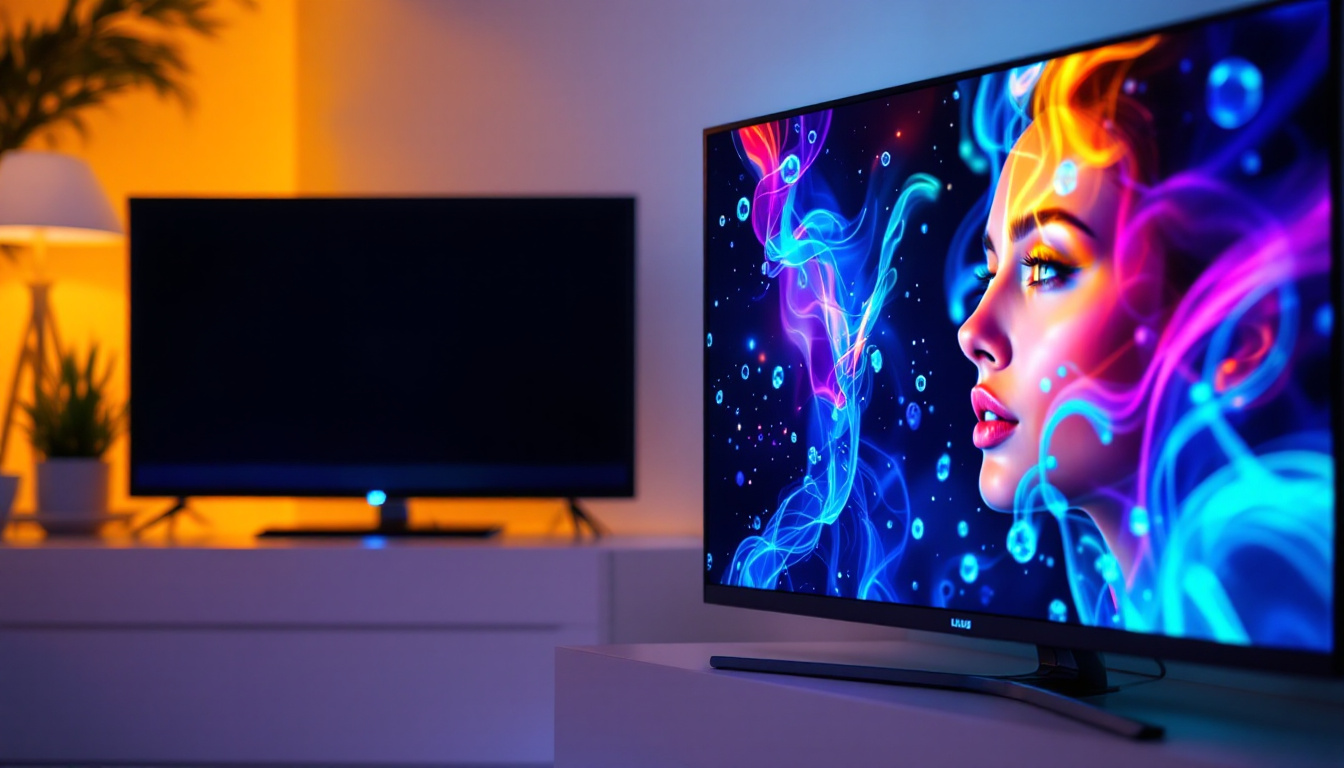Wide Display: LED Display Explained
In the realm of modern technology, LED displays have emerged as a cornerstone of visual communication. From televisions and computer screens to large-scale billboards, the versatility and efficiency of LED technology have transformed how we perceive and interact with digital content. This article delves into the intricacies of LED displays, exploring their functionality, advantages, and various applications.
Understanding LED Technology
LED, or Light Emitting Diode, is a semiconductor device that emits light when an electric current passes through it. This technology has revolutionized display systems, offering brighter, more energy-efficient alternatives to traditional display methods such as LCD and CRT. The transition to LED technology has not only enhanced the visual experience for consumers but has also contributed to significant energy savings, making it a preferred choice for both residential and commercial applications.
The Basics of LED Functionality
At its core, an LED display consists of numerous tiny diodes that collectively create images. Each diode is capable of emitting different colors, and by combining these colors at varying intensities, a full spectrum of hues can be produced. This ability to manipulate light at a granular level allows for stunning visuals and sharp images, making LED displays a popular choice across various industries. Furthermore, the lifespan of LEDs is significantly longer than that of traditional bulbs, often exceeding 25,000 hours, which reduces the frequency of replacements and maintenance costs for businesses and consumers alike.
Types of LED Displays
LED displays come in various forms, each tailored for specific applications. The most common types include:
- Direct View LED: These displays are made up of individual LED modules that create images directly. They are often used in large outdoor screens and digital billboards, providing vibrant advertising opportunities that can capture the attention of passersby.
- LED-backlit LCD: This type uses LEDs to illuminate an LCD panel. It combines the color accuracy of LCD with the brightness and energy efficiency of LEDs, making it a popular choice for televisions and computer monitors.
- MicroLED: A newer technology that utilizes microscopic LEDs for each pixel, allowing for unprecedented resolution and contrast ratios. MicroLED displays promise to deliver true blacks and exceptional color accuracy, making them ideal for high-end applications such as virtual reality and immersive gaming experiences.
In addition to these common types, there are also specialized LED displays designed for unique environments. For instance, flexible LED displays can be bent and shaped to fit unconventional spaces, allowing for creative installations in art and architecture. Transparent LED displays, on the other hand, can be integrated into windows and glass structures, providing a futuristic aesthetic while still allowing visibility through the surface. These innovations demonstrate the versatility of LED technology and its potential to transform how we interact with visual media in our daily lives.
Advantages of LED Displays
The rise in popularity of LED displays can be attributed to their numerous advantages over traditional display technologies. These benefits not only enhance the viewing experience but also contribute to energy savings and longevity.
Energy Efficiency
One of the most significant advantages of LED displays is their energy efficiency. Compared to conventional displays, LEDs consume considerably less power, making them an environmentally friendly option. This efficiency translates to lower electricity bills and a reduced carbon footprint, making LED technology a sustainable choice for both businesses and consumers. Furthermore, the ability to dim LED displays without losing image quality allows for even greater energy savings, especially in settings where brightness can be adjusted based on ambient light conditions. This adaptability not only conserves energy but also extends the lifespan of the display, as lower power consumption generates less heat, reducing wear and tear on the components.
Brightness and Visibility
LED displays are known for their exceptional brightness, which allows them to be viewed clearly even in direct sunlight. This feature makes them ideal for outdoor applications, such as advertising and public information displays. The high contrast ratios and vibrant colors further enhance visibility, ensuring that content remains engaging and easy to read. Additionally, the ability to produce a wide color gamut means that LED displays can showcase images and videos with stunning realism and depth, making them a preferred choice for creative industries such as film and photography. This level of brightness and color accuracy not only captures the attention of passersby but also ensures that messages are conveyed effectively, regardless of the viewing angle or distance.
Longevity and Durability
LED displays are designed to last significantly longer than traditional display technologies. With a lifespan of up to 100,000 hours, they require less frequent replacements, reducing waste and maintenance costs. Additionally, LED technology is more resistant to shock and vibration, making it suitable for various environments, from bustling city streets to sports arenas. This durability is particularly advantageous for businesses that rely on continuous operation, such as retail stores and transportation hubs, where downtime can lead to lost revenue. Moreover, many LED displays are built with weather-resistant features, allowing them to withstand harsh conditions such as rain, snow, and extreme temperatures, further solidifying their role as a reliable choice for outdoor installations. The combination of longevity and resilience not only ensures a better return on investment but also supports a more sustainable approach to technology deployment.
Applications of LED Displays
The versatility of LED displays has led to their widespread adoption across numerous sectors. Their ability to deliver high-quality visuals in various formats makes them suitable for a range of applications.
Advertising and Marketing
One of the most prominent uses of LED displays is in advertising. Digital billboards and signage have become commonplace in urban environments, allowing businesses to reach a broader audience with dynamic content. The ability to change advertisements in real-time and target specific demographics enhances marketing strategies, making LED displays a powerful tool for brand visibility. Furthermore, the bright and vivid colors produced by LED technology capture attention more effectively than traditional print media, often leading to increased foot traffic and sales for businesses. Companies can also utilize data analytics to assess the effectiveness of their campaigns, adjusting content based on viewer engagement metrics, which further optimizes their advertising efforts.
Entertainment and Events
In the entertainment industry, LED displays are integral to concerts, festivals, and sporting events. Large screens provide audiences with immersive experiences, displaying live feeds, graphics, and animations. The flexibility of LED technology allows for creative staging and dynamic presentations that captivate audiences and enhance overall engagement. Additionally, these displays can be synchronized with sound systems and lighting effects to create a cohesive and exhilarating atmosphere that elevates the event experience. From the dazzling visuals at music festivals to the instant replays in sports arenas, LED displays play a crucial role in modern entertainment, ensuring that every moment is visually stunning and memorable.
Corporate and Educational Use
LED displays are also increasingly used in corporate environments and educational institutions. In conference rooms, they facilitate presentations and video conferencing, while in classrooms, they serve as interactive learning tools. The clarity and vibrancy of LED displays enhance communication and information retention, making them an invaluable asset in professional and educational settings. Moreover, the interactive capabilities of some LED screens allow for collaborative learning experiences, where students can engage with the content in real-time, fostering a more dynamic and participatory educational atmosphere. In corporate training sessions, these displays can be used to showcase simulations and case studies, making complex information more accessible and engaging for employees.
Challenges and Considerations
Despite their many advantages, LED displays are not without challenges. Understanding these limitations is essential for making informed decisions regarding their use.
Initial Costs
The initial investment for LED display technology can be significant, particularly for larger installations. While the long-term savings in energy and maintenance costs can offset this investment, businesses must carefully assess their budget and return on investment before committing to LED technology.
Color Accuracy and Calibration
Achieving accurate color representation can be a challenge with LED displays. Variations in manufacturing and environmental factors can affect color consistency. Regular calibration is necessary to maintain optimal performance, ensuring that the display delivers the intended visual experience.
Heat Management
LED displays generate heat during operation, which can impact performance and longevity if not managed properly. Adequate ventilation and cooling systems are essential to prevent overheating, particularly in large installations where multiple displays are used in close proximity.
The Future of LED Display Technology
As technology continues to evolve, the future of LED displays looks promising. Innovations in materials and manufacturing processes are paving the way for even more advanced display solutions.
Advancements in MicroLED Technology
MicroLED technology is at the forefront of display innovation. By utilizing microscopic LEDs for each pixel, MicroLED displays offer unparalleled resolution and contrast ratios. This technology is expected to revolutionize everything from televisions to wearable devices, providing consumers with stunning visuals and immersive experiences.
Integration with Augmented and Virtual Reality
As augmented reality (AR) and virtual reality (VR) technologies gain traction, LED displays are poised to play a significant role in their development. High-resolution LED screens can enhance AR and VR experiences by providing vibrant visuals and seamless integration with digital content. This convergence of technologies will likely lead to new applications and experiences in gaming, training, and entertainment.
Smart Display Solutions
The rise of the Internet of Things (IoT) is also influencing the evolution of LED displays. Smart displays that can connect to the internet and interact with other devices are becoming increasingly common. These displays can adapt content based on user preferences, environmental conditions, and real-time data, creating personalized and dynamic viewing experiences.
Conclusion
LED displays have fundamentally changed the landscape of visual communication, offering numerous advantages over traditional display technologies. Their energy efficiency, brightness, and versatility make them an ideal choice for a wide range of applications, from advertising to education. While challenges such as initial costs and color calibration exist, ongoing advancements in technology promise to address these issues and enhance the capabilities of LED displays.
As the demand for high-quality visuals continues to grow, LED displays will undoubtedly play a pivotal role in shaping the future of digital communication. Embracing this technology not only enhances visual experiences but also contributes to a more sustainable and efficient world.
Discover Cutting-Edge LED Displays with LumenMatrix
Ready to elevate your visual communication and create unforgettable experiences? LumenMatrix, a pioneer in LED display technology, offers a comprehensive range of solutions tailored to your needs. From vibrant Indoor and Outdoor LED Wall Displays to innovative Vehicle and Sports LED Displays, and from sleek LED Poster Displays to interactive Floor and Custom LED options, we have it all. Our All-in-One and Transparent LED Displays are designed to revolutionize your space and captivate your audience. Don’t miss the opportunity to transform your brand’s visibility and engagement. Check out LumenMatrix LED Display Solutions today and step into the future of digital signage.

